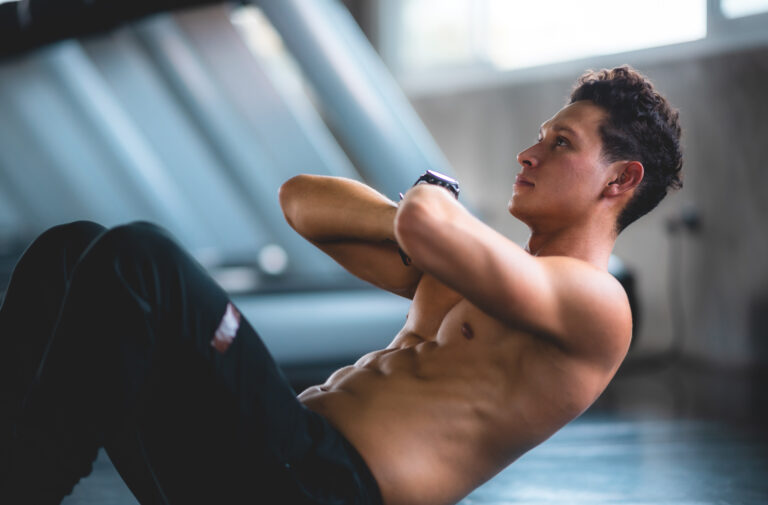What is the Trapezius?
The trapezius muscle, a significant muscle of the upper back, plays a crucial role in various movements and maintaining proper posture. Among its three distinct sections—the upper, middle, and lower fibers—the upper fibers are particularly essential for neck and shoulder movements. Understanding the anatomy, function, and importance of these upper fibers is key to optimizing fitness routines, preventing injuries, and enhancing overall physical performance.
Anatomical Overview
The trapezius muscle, one of the broadest muscles of the back, extends from the base of the skull to the mid-back and stretches across the shoulders. The upper fibers of the trapezius originate from the occipital bone at the base of the skull and the nuchal ligament, which runs along the cervical vertebrae. These fibers insert onto the lateral third of the clavicle and the acromion process of the scapula. The positioning of these fibers allows them to perform specific movements related to the neck and shoulders.
Innervation of the trapezius muscle, including the upper fibers, comes from the spinal accessory nerve (cranial nerve XI) and the ventral rami of C3 and C4. This dual innervation supports the complex range of motions and stabilizing actions the muscle performs. Blood supply to the trapezius is primarily through the transverse cervical artery, ensuring the muscle receives adequate oxygen and nutrients during physical activity.
While the upper, middle, and lower fibers of the trapezius work together, each section has distinct roles. The upper fibers are primarily responsible for elevating the scapula, which is crucial for shrugging the shoulders. They also contribute to extending and rotating the neck. Understanding these specific anatomical features and their implications can help in designing targeted exercise routines and preventing muscle imbalances.
Biomechanical Function
The upper fibers of the trapezius muscle play a pivotal role in several key movements. One of their primary functions is to elevate the scapula, which is essential for actions such as shrugging the shoulders and lifting objects overhead. This elevation is crucial for athletes involved in sports that require frequent shoulder movements, such as weightlifting, swimming, and basketball.
In addition to elevating the scapula, the upper fibers assist in neck extension and rotation. These actions are important for maintaining a stable and upright posture, particularly during activities that require looking up or turning the head to the side. The upper trapezius works in conjunction with other muscles in the neck and upper back to facilitate these movements, ensuring coordinated and efficient motion.
Another important function of the upper trapezius fibers is their role in scapular upward rotation. This movement is essential for raising the arms above the head, a motion frequently performed in various sports and daily activities. The upper trapezius, along with the serratus anterior and lower trapezius, contributes to this upward rotation, allowing for a smooth and controlled lifting of the arms.
The interplay between the upper trapezius and other muscles is crucial for overall shoulder stability. For instance, during overhead activities, the upper trapezius helps stabilize the scapula, providing a solid base for the deltoid muscle to lift the arm. This stabilization is vital for preventing shoulder injuries and ensuring optimal performance during physical activities.
Role in Fitness and Exercise
The upper fibers of the trapezius are integral to many fitness routines and athletic training programs. Strengthening these fibers can enhance shoulder stability, improve posture, and prevent injuries. Various exercises specifically target the upper trapezius, helping individuals achieve these benefits.
One of the most common exercises for the upper trapezius is the shoulder shrug. This exercise involves lifting the shoulders towards the ears, effectively engaging the upper fibers. Proper form is crucial to avoid unnecessary strain on the neck and lower back. Using appropriate weights, such as dumbbells or barbells, can increase the effectiveness of this exercise. For example, lifting 15 kg (33 lbs) dumbbells in each hand while maintaining proper posture can significantly strengthen the upper trapezius.
Another effective exercise is the upright row. This movement involves lifting a barbell or dumbbells vertically in front of the body, engaging the upper trapezius as well as the deltoids. Proper technique is essential to prevent shoulder impingement. Keeping the elbows slightly below shoulder level and avoiding excessive weights can help maintain correct form and reduce the risk of injury.
Overhead pressing movements, such as the military press or push press, also engage the upper trapezius fibers. These exercises require lifting weights overhead, promoting scapular upward rotation and shoulder stability. Proper warm-up and gradual progression in weight are important to prevent strain and ensure effective muscle engagement. For instance, starting with 20 kg (44 lbs) and gradually increasing the load can help build strength safely.
It’s important to note that while training the upper trapezius is beneficial, overemphasis on this muscle group without balancing the middle and lower fibers can lead to muscle imbalances and postural issues. A well-rounded fitness program should include exercises that target all sections of the trapezius, ensuring comprehensive muscle development and optimal functional performance.
Health and Injury Considerations
The upper fibers of the trapezius, like any other muscle group, are susceptible to injuries and disorders. Common issues affecting this muscle include strains, myofascial pain syndrome, and tension headaches. Understanding these conditions and their management is crucial for maintaining muscle health and preventing long-term problems.
Strains in the upper trapezius are often the result of overuse or sudden, excessive force. This type of injury can occur during heavy lifting, sudden neck movements, or prolonged poor posture. Symptoms typically include pain, stiffness, and limited range of motion in the neck and shoulders. Initial treatment usually involves rest, ice application, and anti-inflammatory medications to reduce pain and inflammation. Gradual reintroduction of movement and strength exercises can aid in recovery and prevent recurrence.
Myofascial pain syndrome is another common condition affecting the upper trapezius. It is characterized by the presence of trigger points—tight knots of muscle fibers that cause pain and discomfort. These trigger points can be the result of muscle overuse, stress, or poor posture. Treatment often includes techniques such as massage therapy, trigger point release, and stretching exercises to alleviate pain and restore normal muscle function.
Tension headaches, often caused by stress and poor posture, can also be linked to the upper trapezius. The muscle’s attachment points near the base of the skull can become tense, leading to headache symptoms. Managing stress, improving posture, and incorporating relaxation techniques can help reduce the frequency and severity of these headaches.
Preventative measures are crucial for maintaining the health of the upper trapezius. Regular stretching and strengthening exercises can help keep the muscle flexible and strong. Incorporating exercises that target all sections of the trapezius can prevent muscle imbalances and promote overall shoulder stability. Additionally, paying attention to ergonomics in daily activities, such as proper desk setup and lifting techniques, can reduce the risk of injury and strain on the upper trapezius.
In cases of injury, rehabilitation exercises are essential for recovery. Gradual reintroduction of movement, starting with gentle range-of-motion exercises, can help restore muscle function. As strength improves, incorporating resistance exercises targeting the upper trapezius can aid in full recovery and prevent future injuries. Working with a physical therapist or fitness professional can ensure a safe and effective rehabilitation process.
Impact of Lifestyle and Posture
Lifestyle factors and posture play significant roles in the health and functionality of the upper trapezius fibers. Daily activities, work habits, and overall physical activity levels can influence muscle health and contribute to either the strengthening or weakening of the upper trapezius.
Prolonged poor posture, especially in occupational settings, is a common contributor to upper trapezius strain and discomfort. For instance, individuals who spend long hours at a desk or computer often develop forward head posture and rounded shoulders. This position places increased tension on the upper trapezius, leading to muscle fatigue and pain. Implementing ergonomic adjustments, such as adjusting chair height, screen position, and keyboard placement, can help promote better posture and reduce strain on the upper trapezius.
Regular physical activity and exercise are essential for maintaining the health of the upper trapezius. Engaging in activities that promote good posture and upper body strength, such as yoga, Pilates, and resistance training, can help keep the upper trapezius fibers strong and flexible. Incorporating stretches that target the neck and shoulders, such as the doorway stretch or neck side bend stretch, can also help alleviate tension and improve muscle flexibility.
Stress management is another important aspect of maintaining upper trapezius health. High stress levels can lead to increased muscle tension and the development of trigger points in the upper trapezius. Incorporating relaxation techniques, such as deep breathing, meditation, and progressive muscle relaxation, can help reduce stress and prevent muscle tension.
Awareness of daily habits and making small adjustments can have a significant impact on the health of the upper trapezius. For example, taking regular breaks from desk work to stretch and move around can help prevent muscle fatigue. Using proper lifting techniques, such as bending at the knees and keeping the back straight, can reduce the risk of straining the upper trapezius during physical tasks.
Research and Developments
Recent research has provided valuable insights into the anatomy, function, and treatment of the upper trapezius fibers. Advances in imaging techniques, such as MRI and ultrasound, have enhanced our understanding of muscle structure and function, allowing for more precise diagnosis and treatment of upper trapezius-related conditions.
Studies have explored the effectiveness of various treatment modalities for upper trapezius pain and dysfunction. For instance, research on trigger point therapy has shown that targeted pressure on trigger points can significantly reduce pain and improve muscle function. Similarly, studies on the benefits of massage therapy and myofascial release techniques have demonstrated their effectiveness in alleviating upper trapezius discomfort and improving range of motion.
In the field of exercise science, research has highlighted the importance of balanced training programs that address all sections of the trapezius muscle. Studies have shown
that incorporating exercises targeting the upper, middle, and lower fibers can promote better muscle balance and reduce the risk of injury. This holistic approach to training can enhance overall shoulder stability and performance.
Emerging techniques in physical therapy, such as dry needling and electrotherapy, have also shown promise in treating upper trapezius pain and dysfunction. Dry needling involves inserting fine needles into trigger points to release muscle tension, while electrotherapy uses electrical stimulation to reduce pain and promote muscle recovery. These techniques offer alternative options for individuals seeking relief from upper trapezius-related issues.
Continued research in the field of biomechanics has provided deeper insights into the complex interactions between the upper trapezius and other muscles involved in shoulder and neck movements. Understanding these interactions can inform the development of more effective training and rehabilitation programs, optimizing performance and reducing the risk of injury.
Key Takeaways
The upper fibers of the trapezius play a vital role in neck and shoulder movements, contributing to overall posture and stability. Understanding their anatomy and function is essential for effective training and injury prevention. Regular exercise, proper posture, and stress management are crucial for maintaining the health of the upper trapezius. Advances in research and treatment techniques continue to enhance our ability to manage and improve the function of this important muscle group.









